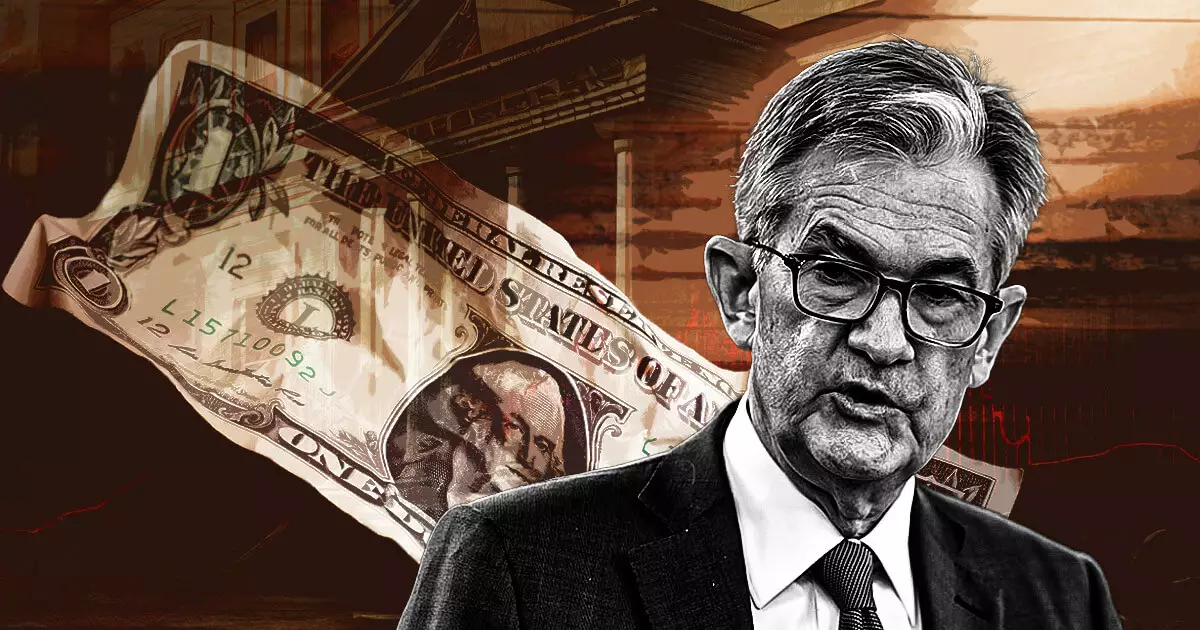The rising tide of stablecoins represents a pivotal shift in the financial landscape, one that cannot be ignored. Federal Reserve Chair Jerome Powell’s recent pronouncements echo a sentiment shared by many who understand that the digital finance revolution is not just a fleeting trend; it is now an integral part of our economic framework. However, in this contemporary era of rapid financial technology advancement, the demand for a regulatory framework that aligns with the innovative nature of stablecoins is urgent. Insights into Powell’s views reveal a complex interplay of hesitation and opportunity for lawmakers, banking institutions, and consumers alike.
The Imperative for Structured Regulation
Powell’s remarks emphasize the necessity of developing a systematic regulation for stablecoins, which are an increasingly popular method for transactions and settlements. His observation that Congress is revitalizing discussions around stablecoin legislation is timely; the marketplace for these digital instruments has matured significantly. The lack of a cohesive regulatory regime presents risks not only to consumers but also to the stability of the financial system. With nearly $14 trillion in transfer volume last year—outpacing traditional payment systems like Visa—the precarious absence of defined regulations poses an existential threat. It is critical to establish appropriate guardrails that enable the innovative potential of this sector while safeguarding consumers and ensuring transparency.
Simultaneously, Powell highlights past attempts to create a legislative framework that has met with frustration. This past reluctance has handed a blank check to unregulated growth, which is precisely what responsible governance aims to eradicate. Powell’s acknowledgment that “the climate is changing” signals a recognition among lawmakers of the need for immediate action. The regulatory conversation should evolve rapidly, embracing adaptability rather than stagnation.
Encouragement for Innovation or an Invitation for Risk?
While Powell’s intentions to nurture responsible innovation are commendable, they tread a fine line between encouragement and carelessness. The Federal Reserve’s conservative posture towards how banks manage digital asset exposures reflects legitimate concerns. However, as the Chair asserts that guidance may be relaxed, a critical perspective emerges: what assurance do we have that allowing for relaxed standards won’t lead to unintended consequences? History has taught us that financial oversights rarely favor the consumer.
The challenge lies in striking the right balance—wielding support for innovation while maintaining a commitment to consumer protection. Furthermore, Powell’s assurance that banks will not be restricted from serving lawful crypto clients must be perceived skeptically. Institutions need clearer oversight mechanisms to avoid a scenario fueled by rapid profit-seeking void of regulatory direction. In the absence of robust guidelines, incidents like the 2008 financial crisis could have musings resurface in the crypto realm.
Consumer Protections Must Lead the Charge
Both Powell’s and Congress’s renewed focus on consumer protection highlights a crucial tenet in stablecoin regulation. For any framework to be effective, it must prioritize consumer rights, understanding the nuances of how individuals interact with these new digital currencies. With an inherent risk in the volatility of crypto assets, stablecoins initially promise to offer a bridge to security through stability. However, without stringent safeguards and transparency standards, that promise can swiftly transform into a spectator’s theatre of finance where consumers play the role of the unwitting actors subject to the whims of market fluctuations.
Congressional proposals, including the GENIUS and STABLE Acts, exemplify the legislative attempts to confront these pressing issues and provide a strong baseline of stability and consumer rights. The emphasis should be on creating an environment where technological advancement does not come at the cost of ethical standards in consumer protection.
Redefining the Future of Financial Integration
As Powell navigates his vision for integrating crypto within traditional banking systems, his sentiment reflects a continuous dialogue shaping the relationship between digital assets and regulated financial services. The complexity surrounding this intersection necessitates comprehensive oversight—one that does not stifle innovation but enables it within a cloak of accountability. The ultimate goal is to foster a landscape where both innovation and consumer safety thrive side-by-side.
With the financial world evolving, the Federal Reserve’s positioning suggests readiness to engage in addressing a sector that is rapidly becoming a permanent fixture within the broader economy. For those in favor of a proactive approach, the pursuit of regulatory clarity is not merely a bureaucratic necessity but a moral imperative to ensure that the bedrock of our financial architecture is resilient, transparent, and capable of embracing the future without compromising consumer welfare.

